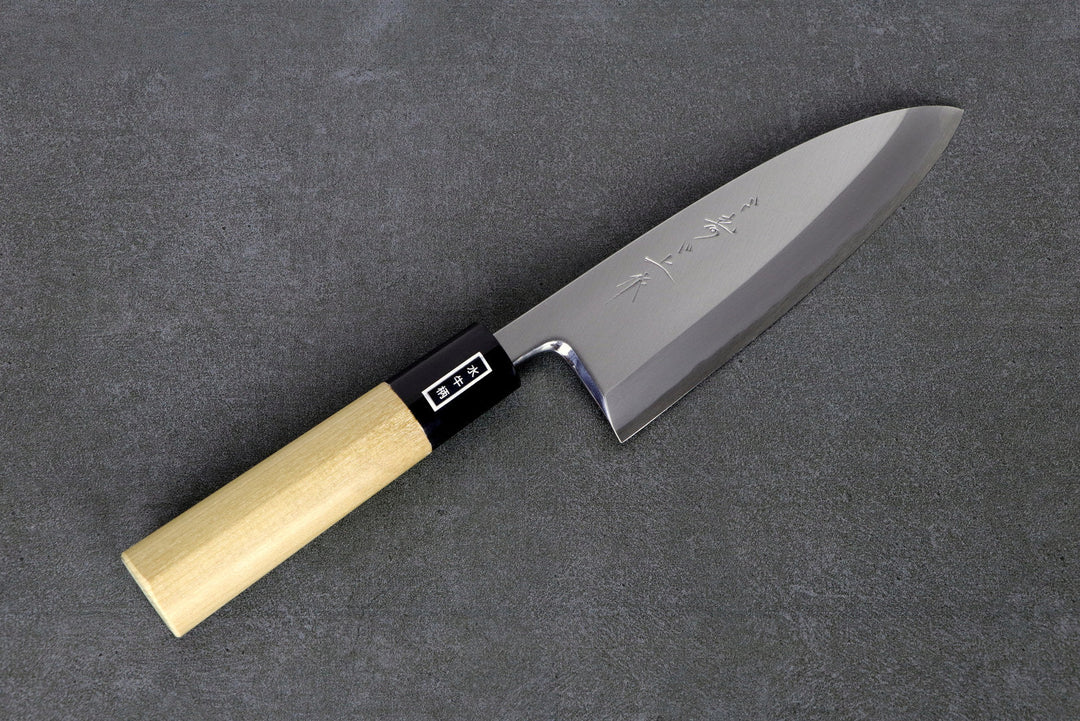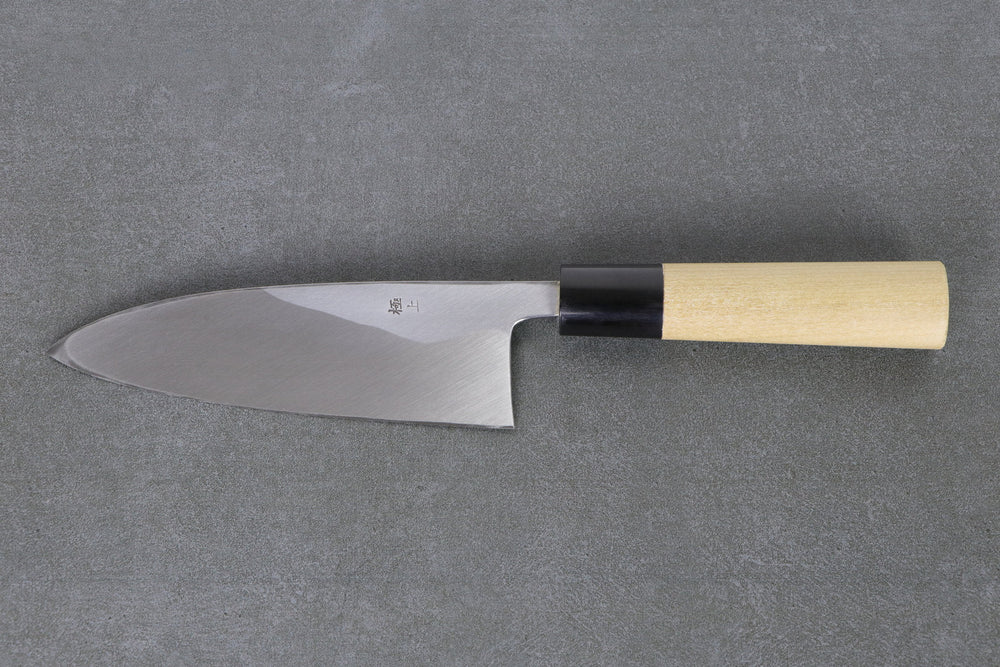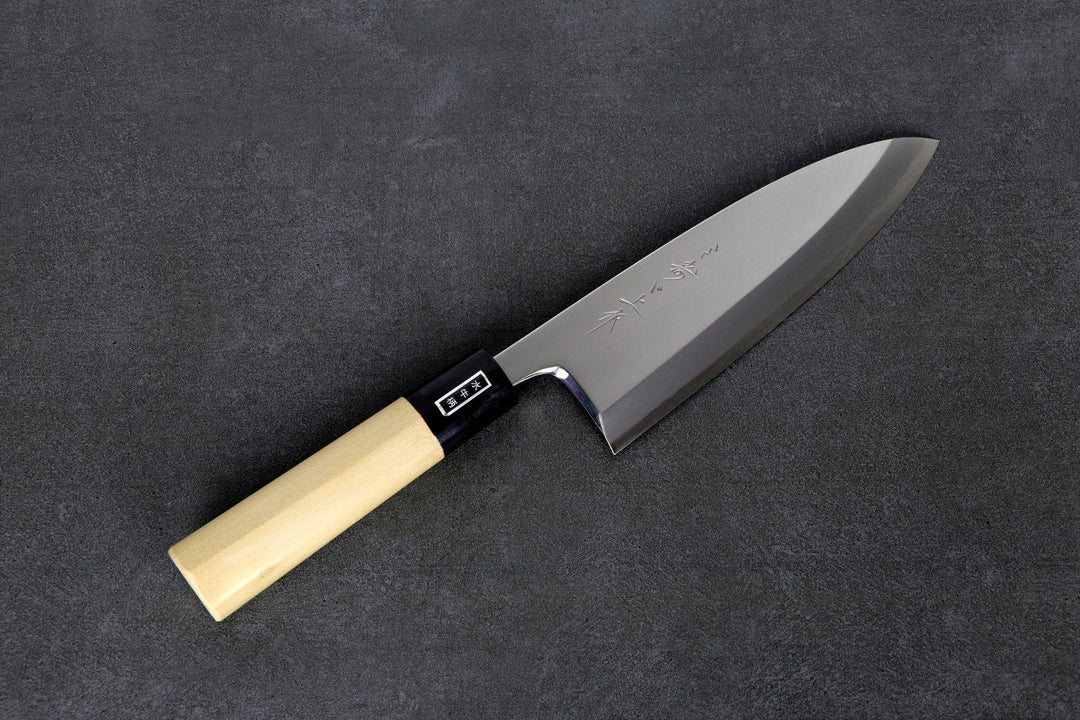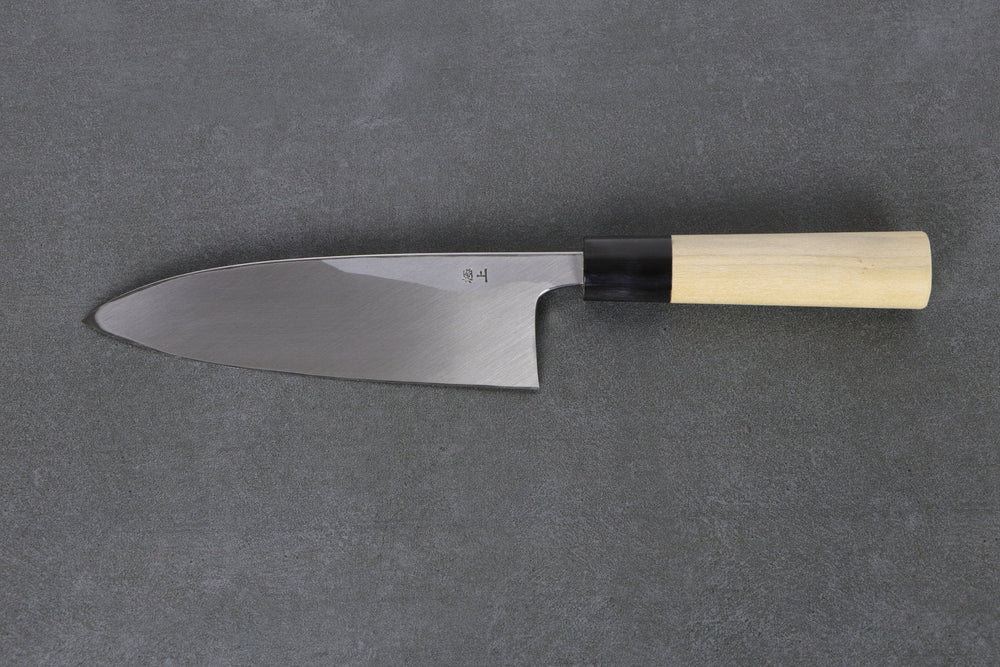DEBA KNIFE - COOKING KNIFE FOR FISH
The Deba knife is one of the most traditional Japanese knives and has a long history. The Japanese population's diet of fish is the main reason for the shape of this knife blade and its popularity. Compared to the Santoku knife or Gyuto knife, Deba knives are much more massive and compact.
The back of the blade is thick and gives the entire knife enormous stability. The Deba is a classic fish knife and can be used for coarse cutting of fish to fine portioning or filleting. Other cuttings can also be cut with the Deba if handled correctly. Small to medium-sized fish bones are no problem for this Japanese knife.
WHAT DOES A DEBA KNIFE LOOK LIKE?
The Deba knife is clearly distinguishable from other Japanese knives due to the thickness of the blade at the back of the blade. It is most similar to the Santoku, if you want to make a comparison. However, the Deba knife has a special task in the kitchen. This knife is used to cut fish and meat. Debas therefore have a wide back. This serves the stability of the kitchen knife so that small bones of poultry and larger fish or bones can be cut through.
This chef's knife has many advantages in handling due to the shape and the one-sided grind.
CUTTING WITH THE DEBA KNIFE
The Deba knife has a high weight in relation to the length of the blade. Due to the high weight, which is caused by the shape of the Deba knife, a lot of energy can be used with little effort. Kinetic energy in cutting is a principle used when it is used as a cleaver for meat or as a boning knife. In addition, for smaller bones, you can also place the heel of your hand on the back of the blade and thus apply targeted force to a specific area of the blade. The thick back of the knife can also be used to carefully cut bones and then complete the cut with the fine blade.
DEBA KNIFE AS A TOOL IN THE KITCHEN
The Deba is usually sharpened on one side. This means that it tends to cut in one direction. Therefore, when buying a Deba, it is important to know whether it is designed for right-handed or left-handed use. If you use a Deba with a bevel for a right-handed person but are left-handed, then you should be careful. The blade of the knife will cut towards the right hand because of the grind. Therefore, pay attention to the manufacturer's instructions.
DEBA - FISH KNIFE
Due to the massive blade design at the back of the blade, the Deba has a very blade-heavy weight distribution. In combination with the mostly single-edged and very long tapered blade, it can be ground extremely sharp and therefore cuts extremely finely. This allows the material to be cut precisely.
With fish in particular, the cell structure of the meat should not be damaged and the escape of liquid should be prevented, which is made possible by the Deba. It is therefore the ultimate tool for processing whole fish, and anyone who has ever been to a Japanese fish market knows that everyone there has such a knife.
Deba knives usually have a blade length of 13 cm to 18 cm and, due to the robust design of the blade, are heavier than other Japanese blade designs of this size. Nevertheless, the blade should never be levered or twisted, as this could cause the very hard blade steel to break. Classic steels for these knives are shirogami and aogami, but there are also various versions made of other steels.
ARE THERE DEBA KNIVES WITH STAINLESS STEEL BLADES?
The Deba knife is classically a fish knife. It is used for cutting fish and filleting. It can also be used for meat or firm vegetables. With firm cut material, the Deba can be used carefully as a cleaver. However, the blade must never be twisted, leveraged or struck with momentum against hard objects. Although the blade is very hard, the Deba is also sensitive. This is due on the one hand to the very thin and sharply ground blade of the knife and on the other hand to the steel used. Genuine Japanese Deba knives are forged from carbon steel. It is rare for a Deba knife to have a stainless steel blade.
DEBA KNIFE BLADE LENGTH
The blade length of the Deba ranges from 15 cm to 20 cm. A blade length outside this range is not advantageous when using the Deba, at least outside fish markets. The blades of the Deba are optimised for processing fish and cutting through bones, but it can also be used as a boning knife and for other cuttings.
DEBA KNIFE GRIND AND HANDLE
The Deba knife is normally ground on one side. This means that the grind is extremely precise. Only in this way can the edge roughly cut fish and meat like a boning knife and at the same time enable precise cuts. Although the Deba is a knife for fish, it can also be used for meat.
The handle of the Deba is almost always made of wood. Wood has the advantage of a better grip when it gets wet. However, the handle must not be coated with sealing materials, such as Urushi.
WHAT IS A DEBA KNIFE WORTH?
Hand-forged Japanese Deba knives cost from 150€. However, Deba knives can quickly cost several hundred euros, which is nothing unusual. Japanese blacksmiths who make Deba knives put a lot of heart and work and also a lot of forging skill into this product. Some time is also needed to create the blade and this "something" must also pay off for the smith to be able to continue this tradition. Therefore, it can be worthwhile to invest a little more money to be able to buy a Deba.
DEBA KNIVES - THE BUYING GUIDE
If you want to buy a Deba, you have to think about the price, the quality of the blade, the brand and a lot more. Deba are special blades and are not so common in Europe. Therefore, the choice of products may not be as wide and one should be open to alternatives. The results of searching for a Deba on the net are probably better than in retail stores. Hardly any retailer has more choice locally than can be found on the internet. On the one hand, you can only evaluate by pictures and text on the internet, but there is the possibility to compare the articles well and possibly also to evaluate the price. If you can't find the item you want on any site, you can also contact the shop





